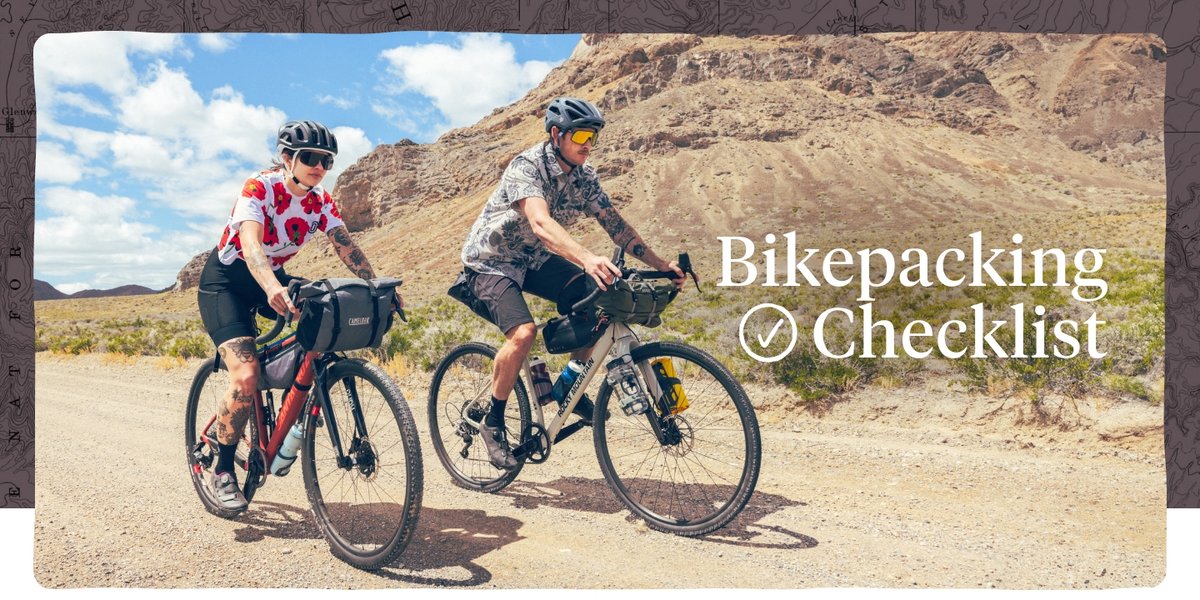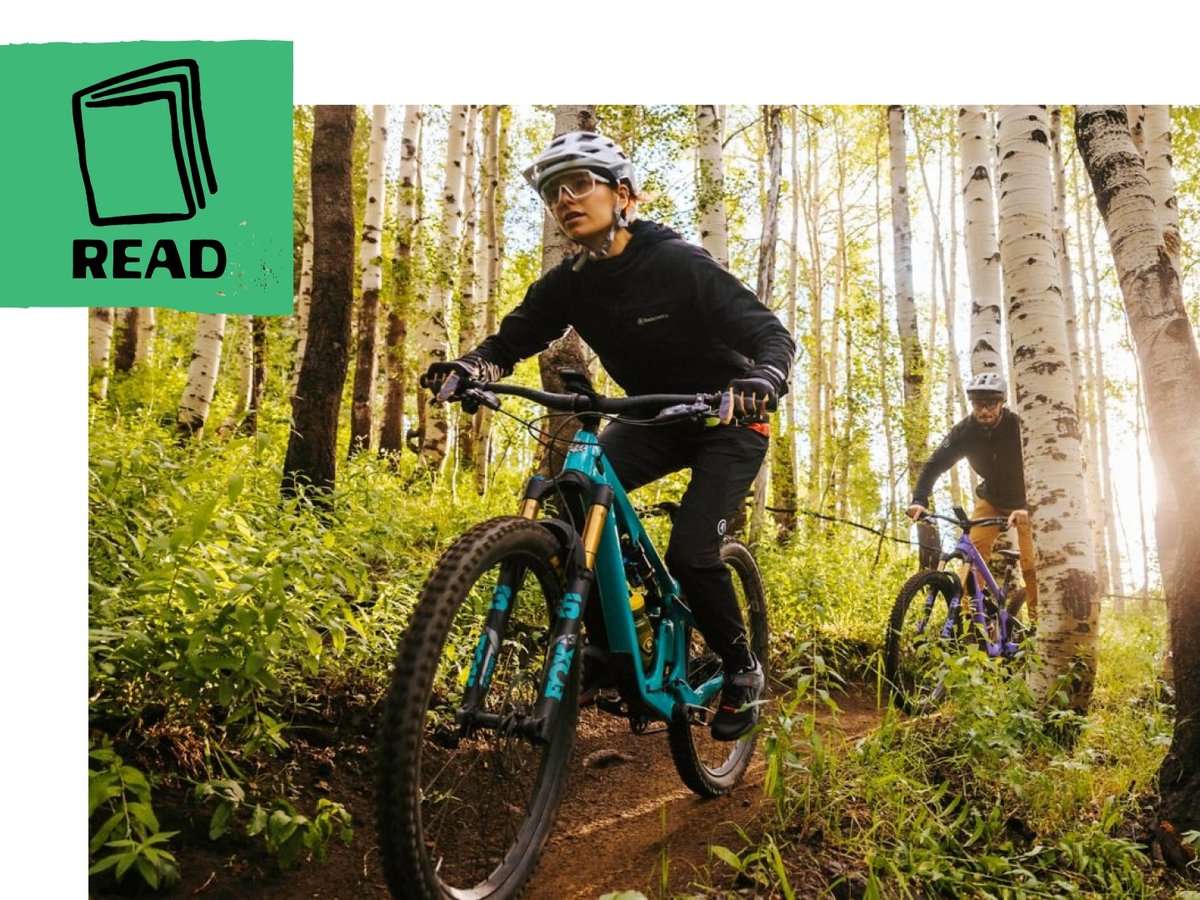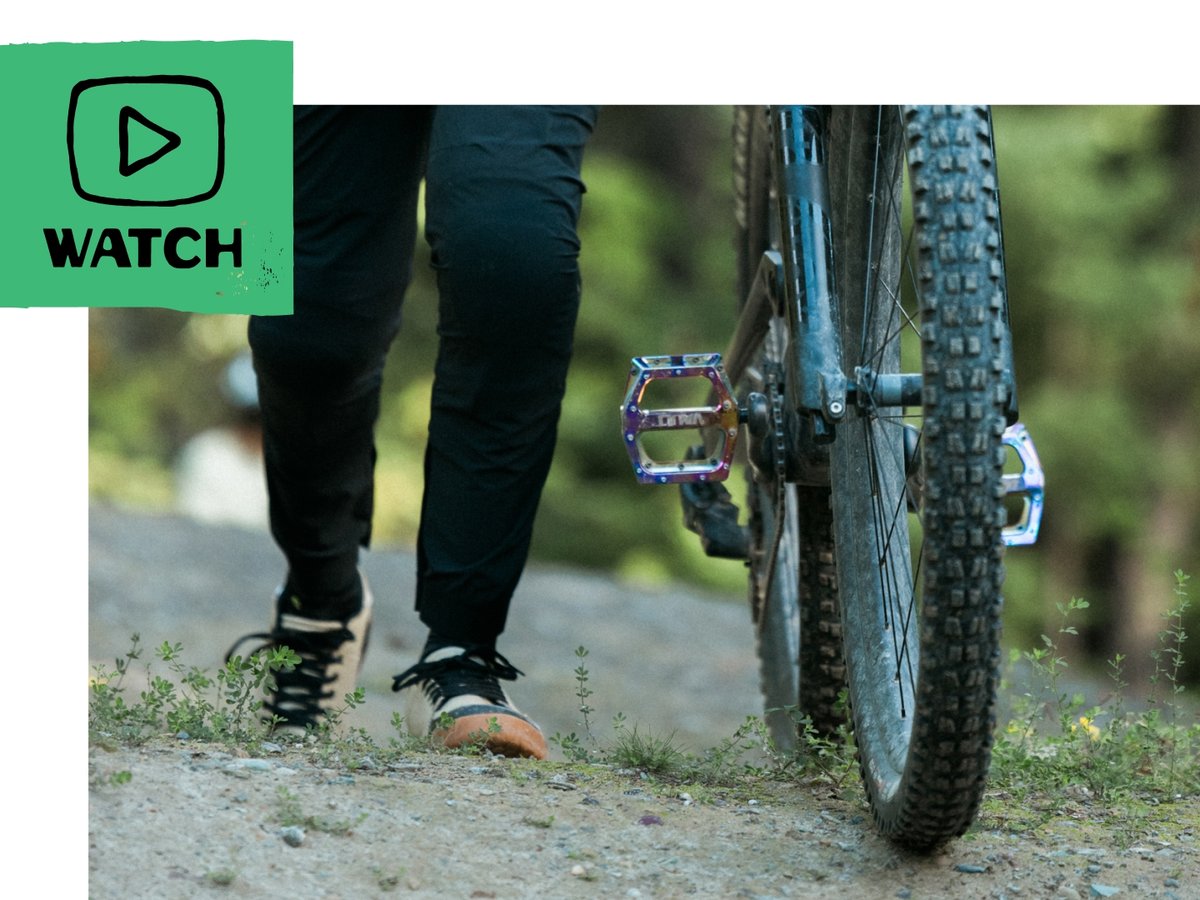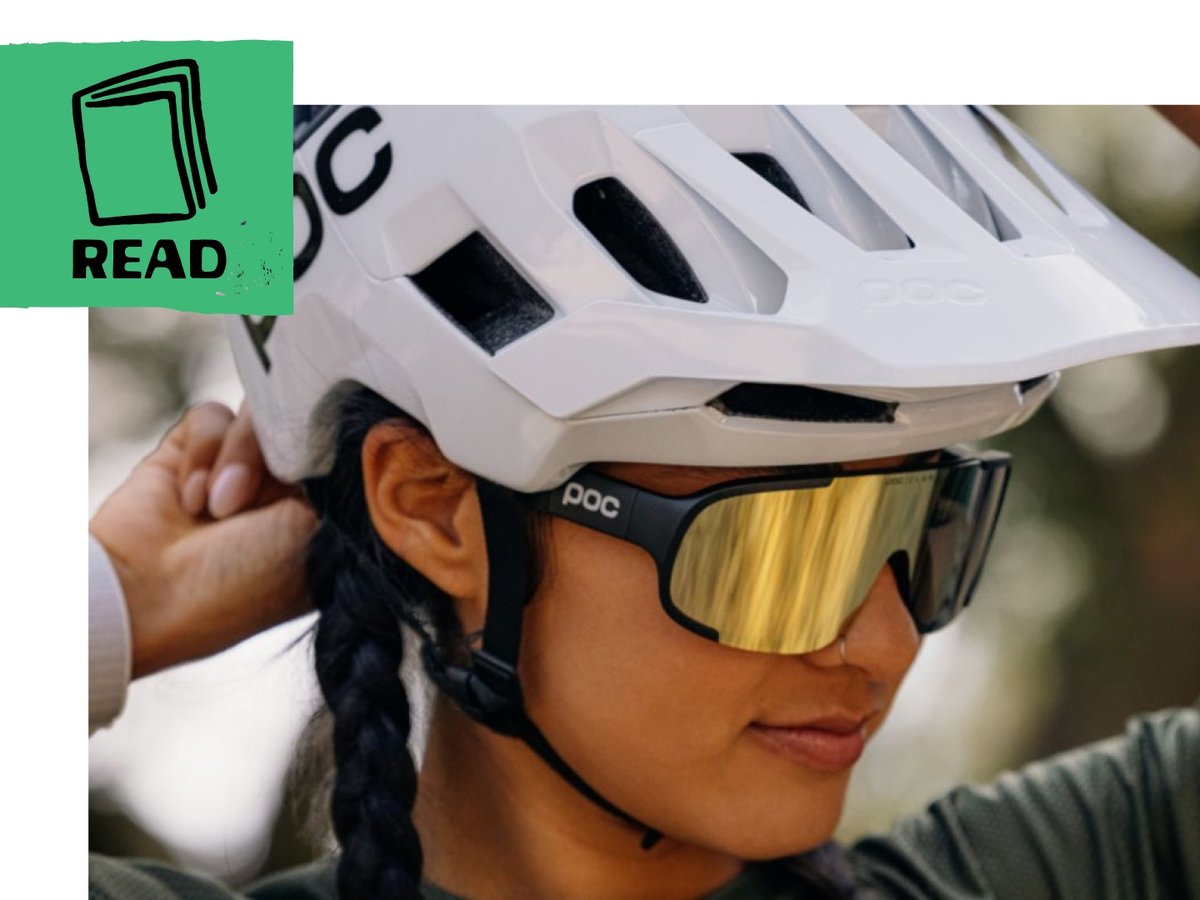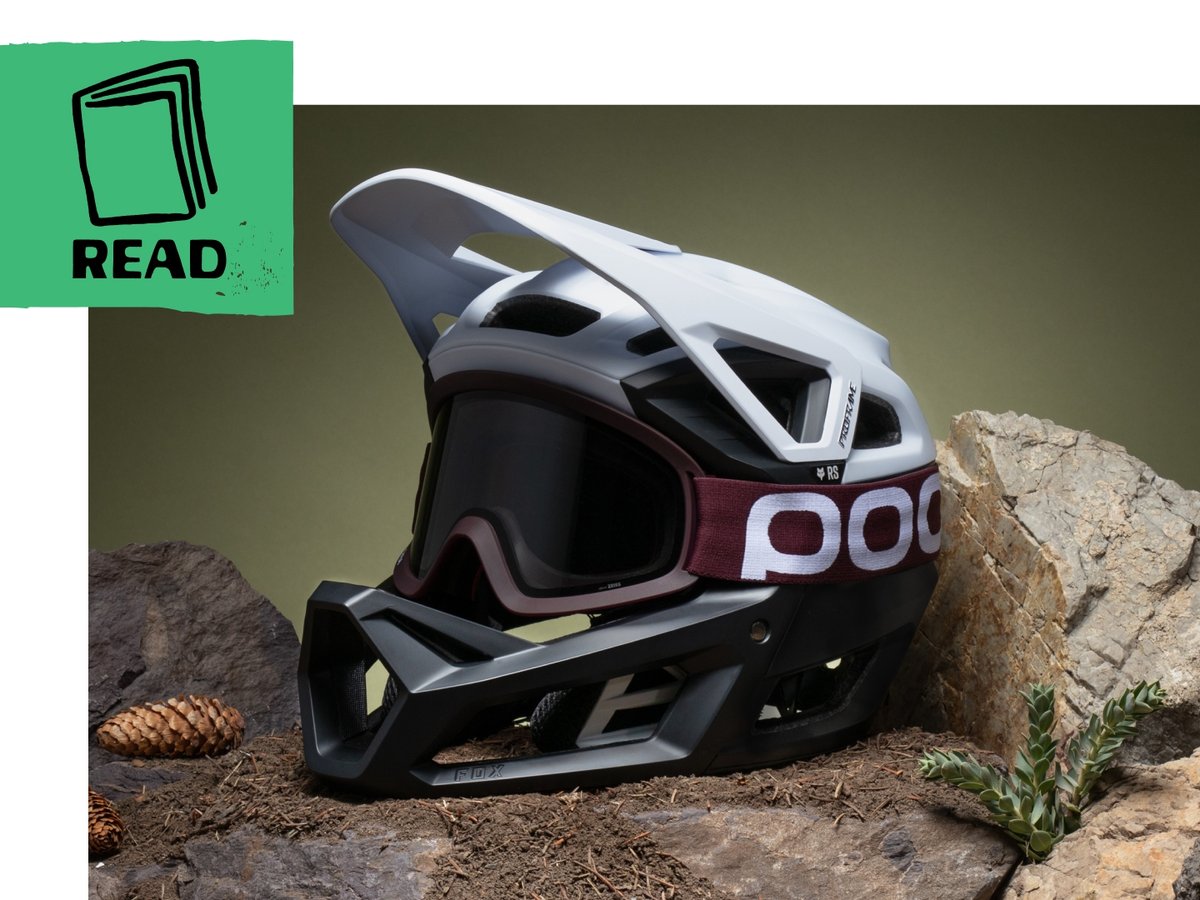Bikepacking Checklist
Published June 18, 2024
A bikepacking trip is always a good idea, from an adventurous warm summer adventure to finding a way to keep warm during the colder months. However, we want to ensure you are ready to go with the proper bike setup, essential layers, cookware, sleep systems, and beyond, so we created a checklist to make sure you have everything you need for a safe and successful trip during any season.
Depending on the time of year and location, some items may be more necessary than others. It’s important to check the weather for each area you plan on riding through and spending the night in, and pack accordingly. A bikepacking trip can be of any length, from a single night to a cross-country journey, so the amount of gear, food, and other essentials needed to keep you fed and comfortable will vary. If you aren’t sure where to ride on your next adventure, we’ll also cover that in this bikepacking checklist.
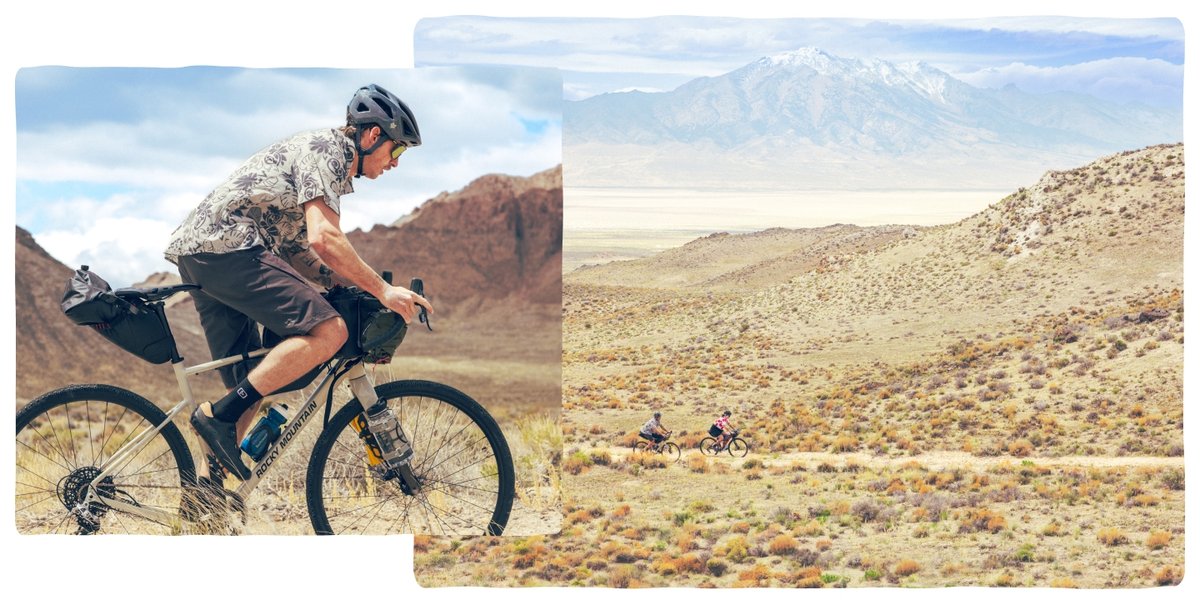
Essential Layers
Our choice of clothing is vital to our bikepacking trip. Not being prepared for any possible weather conditions can end in a fun story, but may leave you cold and wet for a few miles without the proper layers. We recommend packing lightweight options that keep you warm, protect you from the elements, and block the sun without weighing down the bike.
□ Sun Shirt
As you ride for hours at a time under the hot sun, wearing a long-sleeve shirt with UPF protection and breathability offers optimal protection and keeps you cool on hot days.
□ Windbreaker
During the brisk morning and chilly late-night portions of your ride, we recommend bringing a lightweight windbreaker that blocks the wind to help keep you warm.
□ Rain Jacket
To keep yourself dry when the rain inevitably falls, bring along a lightweight rain jacket that is known for its packability.
□ Thermal Midlayer
Whether fleece or wool is more your vibe, we recommend keeping a thermal midlayer in your pack that you can quickly stop and throw on or take off when you feel your body temperature change.
□ Thermal Jacket
This may not be a key item on a hot summer trip through the desert, but if you plan on riding through the mountains, a lightweight thermal jacket that provides warmth is essential.
□ Long Thermal Bibs
Like the thermal jacket, a pair of thermal bibs may not be necessary in the desert, but bringing a full-length pair will really come in handy as you ride over a big pass.
□ Neck Gaiter
Protecting the face from the sun and wind prevents sunburn, windburn, and a frozen face while riding, so we recommend either a UV neck gaiter or a thermal neck gaiter, depending on the season and terrain to be covered. It could also serve other purposes, like keeping loose dust or bugs out of our mouths.
□ Gloves
A pair of gloves that are durable, comfortable, and have all the features that work best for you is a must. Whether it be a half-finger, fully padded glove, or full-finger gloves with palm grip and touchscreen compatibility, be sure to keep yourself comfortable and protected.
□ Socks
No matter the time of year, a trustworthy pair of Merino wool socks is a must-have. They are breathable, moisture-wicking, and temperate-regulating, providing unmatched comfort for miles on end. They also have a natural odor resistance, keeping you feeling and smelling fresh after long days of riding and possibly allowing for multiple days between washes.
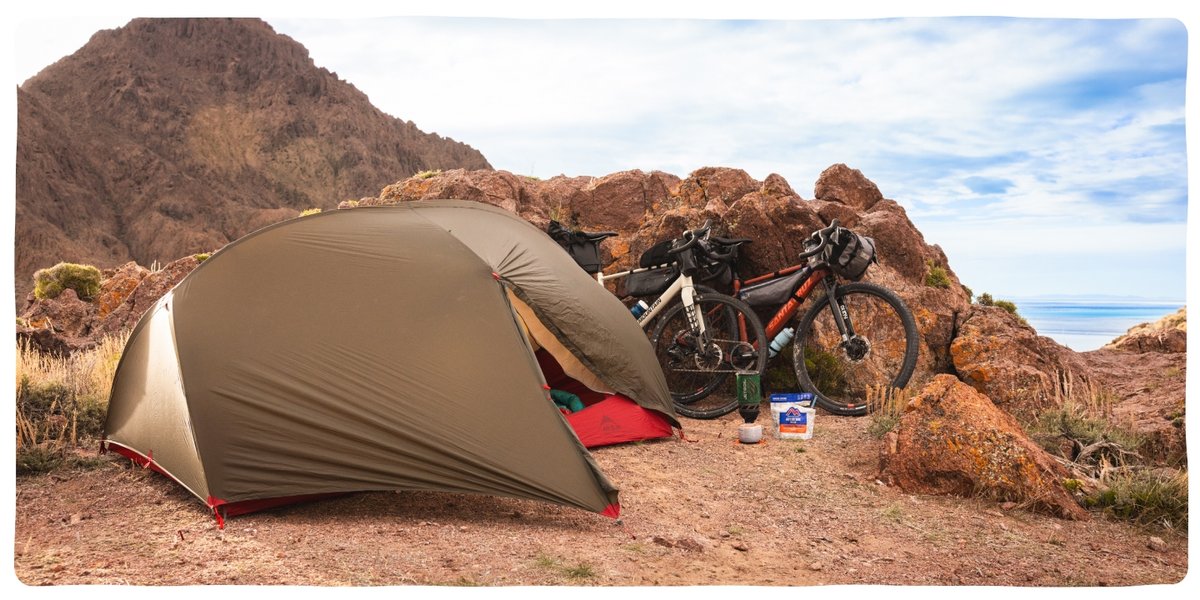
Bikepacking Tents & Sleep Systems
Getting a good night of sleep between big days of riding depends on our sleep system, so we recommend the following to keep you dry, warm, and comfortable no matter where you decide to camp.
□ Sleeping Bag
A sleeping bag is a must-have for a sleep system, but which kind is best for you? Depending on the temperatures in the area you’ll be camping in, one may be better than the other. Be sure to check the temperature rating, find the correct shape and size for your body type, and choose between down and synthetic insulation options.
Down-fill bags are our top recommendation because they are lightweight, packable, and warm. These qualities are vital to packing as little as possible on longer trips and providing an ideal warmth-to-weight ratio, but if the bag gets wet, it may take longer to dry.
Synthetic fill bags are usually a more budget-friendly option and offer optimal water resistance. They continue to insulate while wet and dry a bit quicker but are usually a bit bulkier and weigh more than a down-insulated bag.
□ Tent
As the most popular form of shelter, a durable ultralightweight tent is ideal for camping out between big days of riding. Because of the small, lightweight construction of a backpacking tent, most
riders opt for this type of tent, which usually consists of five parts: the tent body, poles, stakes, footprint, and fly. Consider seasonal use, waterproof rating, and how many people will share the tent.
□ Bivy
For a more lightweight option, opt for a Bivy to keep you dry and protected for a good night’s sleep. The Bivy is more of a minimalistic choice, taking up much less room in our pack than a tent would and weighing significantly less. Simply unpack it, slip your sleeping bag inside, and rest up for tomorrow’s ride.
□ Sleeping Pad
Necessary for both warmth and comfort, we suggest investing in a good sleeping pad to create a barrier between you and the cold, rough ground. The two main types of sleeping pads include foam, an inexpensive, durable, lightweight option, and inflatable, which can provide added comfort away from a lumpy surface. The inflatable pad will take up less space and weigh less than a foam pad, so keep this in mind when deciding which is best suited for your needs.
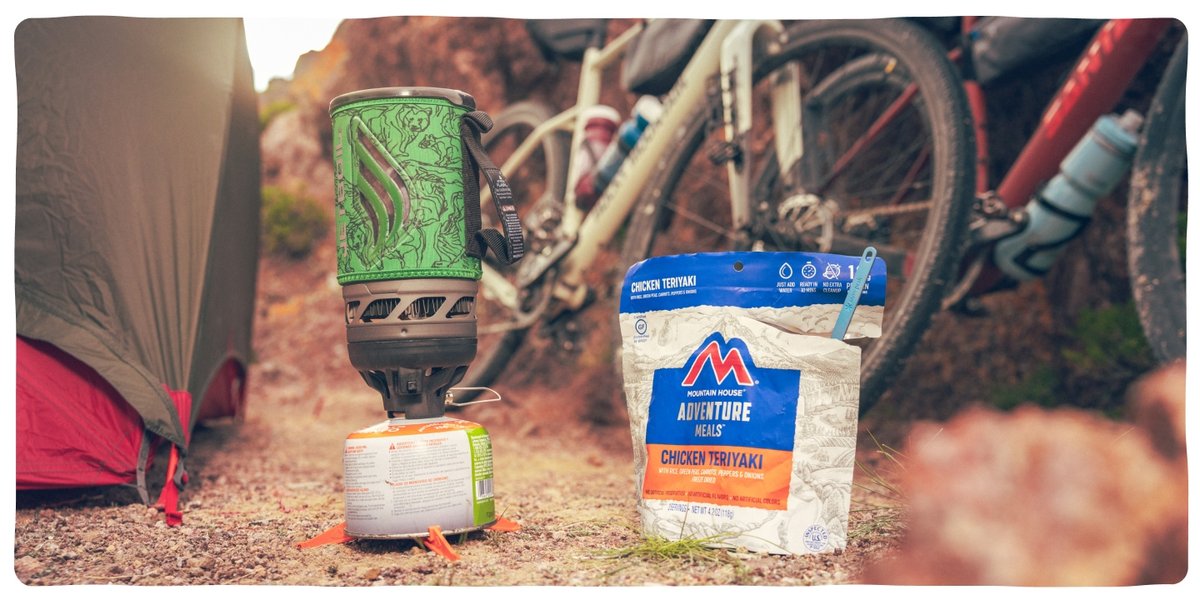
Camp Kitchen & Nutrition
Packing only the essentials can be challenging, especially regarding how and what you will eat during your bikepacking trip, so here’s a list of the necessities to ensure you can cook as needed.
□ Stove
There are five main types of camp stoves: multi-fuel, spirit burner, canister, wood-burning, and solid fuel. Any of these stoves can be ideal for your trip, but depending on your trip length, we prefer a multi-fuel stove for its weight savings, fuel compatibility, and more efficient cooking, or a titanium canister stove, which is also ultralightweight, compact, and easy to use.
□ Fuel
Depending on the type of stove you use, you will need to bring different kinds of fuel. For a multi-fuel stove, alcohol, gasoline, or fuel tablets can be used, and with a canister stove, a gas canister is your go-to.
□ Sparker
Although your stove probably has a built-in igniter, it can be beneficial to bring a backup option like a lighter, magnesium sparker, or matches in case your primary equipment fails due to wind, high elevation, or just simple bad luck.
□ Pot
Finding the perfect pot to boil water and cook meals is crucial to eating on the go. We are big fans of titanium because of its ultralightweight and durable construction, optimal thermal conductivity, and ease of cleaning after use. If you are traveling solo, a single pot will suffice, but if you’re traveling in a group or just want extra cookware, we recommend finding a pot set with a space-saving nesting design.
□ Spork
Instead of packing a collection of utensils, a spork will get the job done whether you’re eating eggs for breakfast or soup for dinner. Bonus points if it’s a long-handled spork to reach the bottom of food bags.
□ Cups & Mugs
If you love your morning coffee, bringing along a small mug is a must. Like the pot, we recommend a titanium mug for its durability, weight savings, and antimicrobial properties.
□ Dehydrated Meals
Dehydrated meals are the most popular food option for multi-day trips because they are convenient, packable, and easy to make with just hot water.
□ High-Calorie Foods
Given the amount of calories you’ll burn daily, getting as many calories in as possible will help you keep up your energy levels as you pedal. Some quick options include bars, dried fruit, nuts, or energy gels.
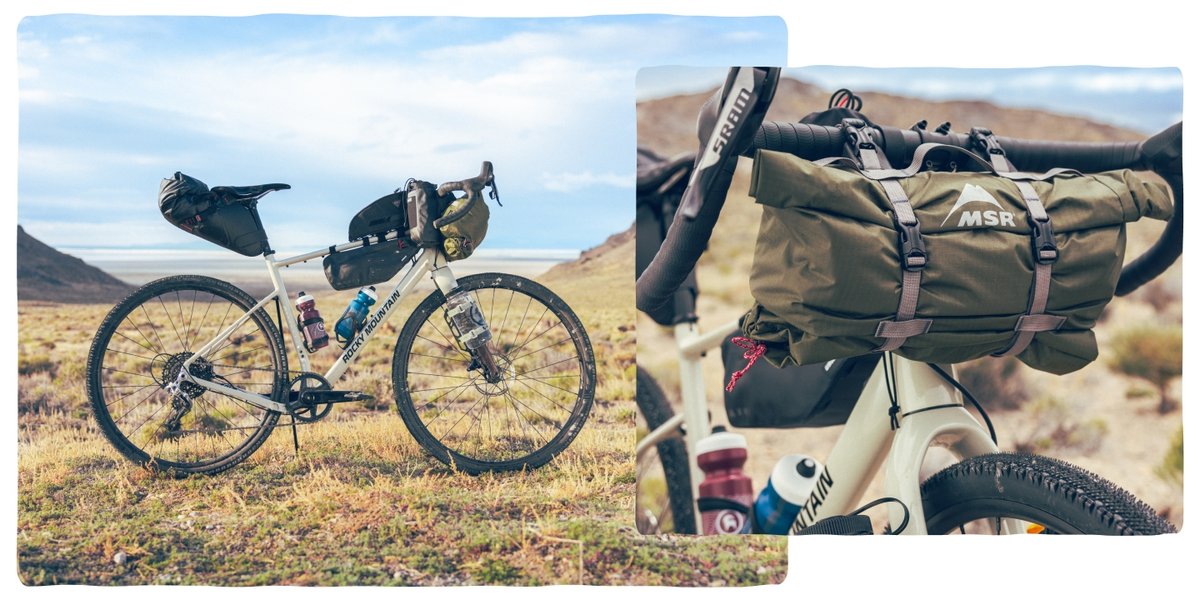
Bikepacking Bags: Bike Setup
Packing strategically for any length of bikepacking trip starts with our choice of bags and where we choose to mount them on our bike. There are a wide variety of options in different shapes and sizes, but here are the ones we recommend.
□ Pannier
A lightweight, spacious pannier is an ideal storage option for the bike's rear rack. With plenty of options ranging in volume, type of attachment, fabric, and weight, it is easy to find a perfect fit for your bike.
□ Handlebar Bag
The handlebar is one of the most convenient places to store essential items like snacks, a phone, sunglasses, and other smaller items we want within reach. It can also be a great place to store items such as a folded sleeping pad, a dry bag of clothes, or even a tent.
□ Frame Bag
Whether you want to use the entire frame triangle or just a portion, a variety of frame bag options are available to store bigger or heavier items like food, cooking equipment, or spare parts.
□ Seat Bag
From a traditional saddle bag to hold spare tires, tools, and other bike-related essentials to a larger seat pack that carries bigger items, utilizing the storage space underneath the saddle is very beneficial.
□ Seat Bag
From a traditional saddle bag to hold spare tires, tools, and other bike-related essentials to a larger seat pack that carries bigger items, utilizing the storage space underneath the saddle is very beneficial.
□ Top Tube Bag
Ideal for storing snacks, small tools, headphones, and other small items, a top tube bag keeps our necessities close by to limit our stops and digging through our bags.
□ Stem Bag
Like a top tube bag, a stem bag is a great place to store small snacks, your phone, and other essentials you want within reach as you ride.
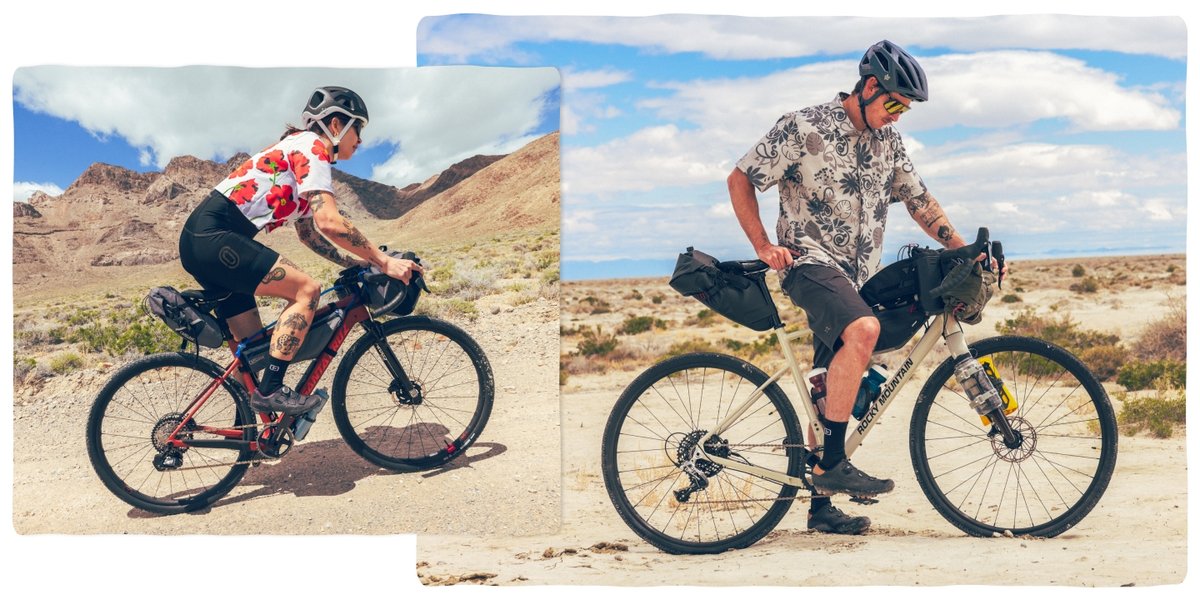
Best Bikepacking Bikes
Finding the perfect bike for your riding style, average trip length, and overall versatility can make or break your bikepacking experience. An excellent place to start is by looking into the specifics you prefer, such as the frame material, handlebar type, suspension, storage/accessory mounts, and the drivetrain.
Gravel Bike
A gravel bike is the way to go for a route that combines pavement and dirt/gravel roads. The newest gravel bikes are optimized for speed and efficiency, keeping you comfortable over long distances while allowing you to ride fast. They often look more like road bikes but feature gravel-specific adaptations like bigger tires, frame storage, and better stability to keep you confidently riding over rough terrain at higher speeds on long-distance trips.
Hardtail Bike
If you plan on riding a route mainly involving singletrack and loose, rocky trails, a hardtail mountain bike may be for you, especially if it features front suspension. It will be heavier than a gravel bike but will provide additional stability and comfort over bumpy, technical trails and feature plenty of storage space for our bikepacking essentials.
Carbon, Steel, or Aluminum?
The general rule of thumb is to keep the bike's weight down without losing strength and riding comfort, but which material is the best for you?
Carbon fiber frames are the lightest option and offer an exceptionally smooth ride on the road and gravel, making them a popular choice for riders carrying extra weight in their gear. However, if a frame gets damaged, it is harder to find a repair while on a trip.
Steel frames offer more strength and durability while still offering a smooth ride as they absorb vibrations over rough terrain. Although they weigh a bit more, they aren’t too heavy, so you can still load up plenty of gear without worrying about not making it up that steep climb.
Aluminum frames are lightweight, durable, and affordable, but they are stiffer than carbon or steel options, making them less comfortable on bumpy terrain unless you opt for a hardtail bike with suspension or a carbon fiber fork.
Gearing
After choosing the type of bike and frame construction that best fits your riding style, the next step is deciding what kind of gearing will get you where you need to go. Regarding mixed-terrain riding, most riders opt for a 1x drivetrain option because of its simplicity, minimal maintenance, and ability to ride with wider tires. However, a 2x drivetrain will provide you with more gearing options to help you conquer any terrain on your path.
You will also have to decide between an electronic or mechanical drivetrain, both of which have pros and cons, so it really comes down to your preference. With an electronic groupset, you’ll have a more efficient shifting performance and less fatigue on the hands, but you’ll have to ensure the battery stays charged, which can be a hassle during longer bikepacking trips.
Where To Go Bikepacking
Whether you are a detailed planner or a go-with-the-flow kind of person, there is a route out there for everyone. There are already-established, well-known bikepacking routes across the country that feature downloadable maps that are easy to follow, local routes that roll through nearby towns via trails and roads we know well, and there’s always the option of turning down the road less traveled and getting lost in nature.
Loops
Starting and finishing at the same spot allows for easy planning, making it easier for a shorter trip in an area that may be more well-known to you. Find a parking area or historical landmark where you can safely leave a car, find a campsite on the route, and head back to the car.
Point-To-Point
A through-route can be a lot of fun if you are okay with doing a bit of extra planning around getting yourself back to your starting point. This is an excellent option if a more extended trip is up your alley because it allows for taking random roads, staying in more remote areas, and taking your time on your ride. To get back to your starting point, there are plenty of options sure to suit your style, whether public transport, like a train or bus, grabbing a rental car, or hitchhiking.
Points of Interest
If you aren’t sure how to map out your route, try planning it around major points of interest. These could include historical landmarks, National Parks, scenic areas, hot springs, or anything else that sparks your interest.
Plan Around Campsites
Another important tip when planning your trip is to list campsites where you will feel comfortable spending the night. Even if you plan on spending the night in the middle of your route, it’s good to know the area you’ll probably reach before sunset. Campsites like a KOA will get you an indoor shower, bathroom, laundry, pool, and other amenities if you want a night of glamping, or you can stay one with nature on state and federal public lands managed by the National Park Service (NPS), Bureau of Land Management (BLM), Fish and Wildlife Service (USFWS), or Forest Services (USFS).
Find & Download Pre-Made Routes
When planning a trip, it's a good idea to seek out friends who have been on fun bikepacking trips or look online for route suggestions. Other users on Strava save and share their routes as downloadable options, as do websites like bikepacking.com.
Choosing Bikepacking Gear At Backcountry
If you are unsure which of these awesome products is the best fit for you or your bike or are looking for recommendations on other products, we can easily connect you with a bikepacking-loving Gearhead™ Expert who has put their gear to the test on their own trips.
Bikepacking FAQs
Q: Should I use a gravel bike or a mountain bike?
A: It will mostly depend on the terrain you plan on riding. If you are going on a longer trip and sticking to gravel roads and pavement, a gravel bike will be more efficient. But if you plan on riding on singletrack or loose, rocky trails, you may prefer a hardtail mountain bike with front suspension to keep you riding comfortably over rougher trails.
Q: What are the most efficient bags to carry gear in?
A: Using a combination of a pannier, frame bag, and handlebar bag is usually enough to carry the main essentials.
Q: How do I choose between a tent and a bivy?
A: Think about the amount of space you want during the night, how much room you have for on-bike storage, and the amount of time you want to spend setting up and taking down camp. The bivy will save room and be easier to set up, but give you much less space to sleep in, while the tent may take up a bit more space but will give you more freedom during the night.
